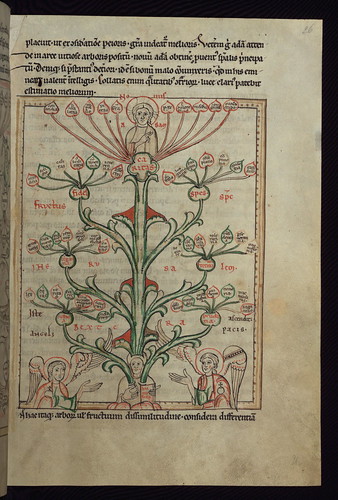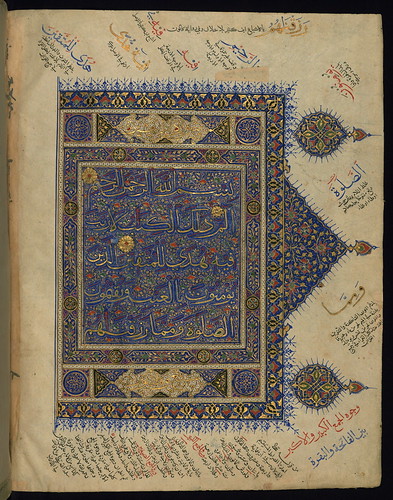
Illuminated Manuscript, Conrad of Hirsau's Speculum Virginum, Tree of Virtues, Walters Art Museum Ms. W.72, fol. 26r, originally uploaded by Walters Art Museum Illuminated Manuscripts.
This manuscript, written at the Cistercian abbey of Himmerode in Germany in the early thirteenth century, is one of twenty-two surviving Latin copies of the Speculum Virginum, or Mirror for Virgins. Attributed to Conrad of Hirsau, the text was written in the first half of the twelfth century as a guide for nuns, and offered them theological lessons in the form of a hypothetical conversation between a teacher, Peregrinus, and his student, Theodora. The twelve illustrations in the manuscript portray the protagonists as well as the mystical visions and diagrams they discuss in the text. The large, expressive pen drawings bring the text to life, and are an excellent example of German art of this period.

